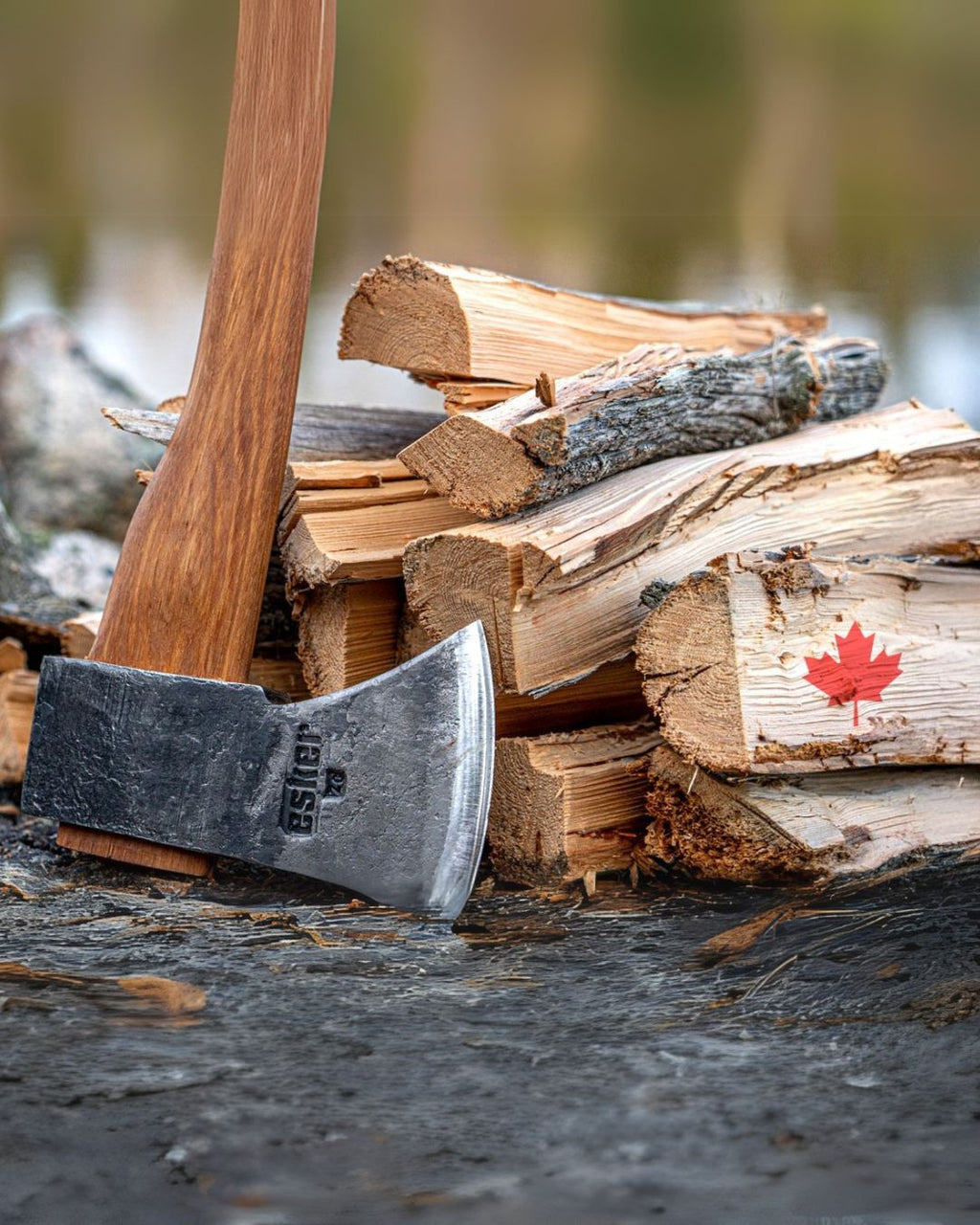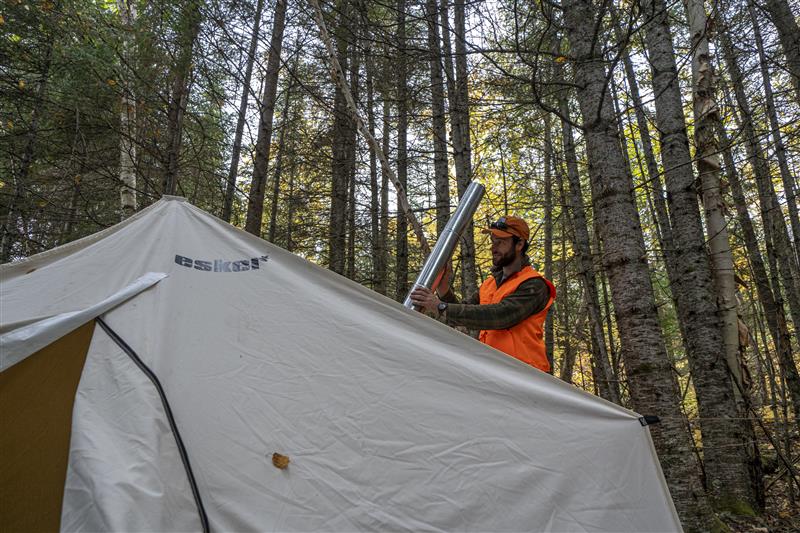Camp Sustainably: 10 Rules for Responsible Outdoor Living
Introduction: Why Sustainability in the Outdoors Matters
There’s a quiet resurgence happening in the Canadian wilderness.
As more Canadians choose local tourism over cross-border travel, we’re rediscovering the wild places right in our own backyard. Eco-friendly camping is gaining momentum as we embrace the beauty of our national parks, forests, and lakes. Camping isn’t just a seasonal pastime —it’s an integral part of our Canadian lifestyle, one that fosters a deeper connection to the land.
But with this renewed love for the outdoors comes an important responsibility. Our natural spaces, already cherished by many, are starting to feel the weight of this increased presence. Trails are widening, firewood is gathered too quickly, and boughs are stripped bare. These are not the actions of true stewards of the land.
As local travel grows and more people seek low-impact camping experiences, it’s essential that we understand the impact of our adventures. Camping sustainably isn’t just about following rules—it’s about respecting the land and minimizing our ecological footprint while still enjoying all the rewards of the outdoors.
Sustainable camping is a return to timeless values: humility, resourcefulness, and respect for the environment. The 10 rules below aren’t just guidelines—they’re a way of ensuring that your responsible outdoor adventures leave the world better than you found it.
1. Plan Ahead, Research the Lands, and Prepare
The first step in camping sustainably starts long before you head out. It begins with knowing where you’re going and understanding the landscape you’ll be visiting.
Research is key—whether you’re heading to a well-known provincial park, crown land, game preserves, or frost centres. Know the rules, restrictions, and any environmental concerns specific to the area.
Not only will this help you pack smarter, but it will also ensure you’re minimizing your impact by selecting the right campsite and choosing sustainable activities.
Planning ahead allows you to travel with minimal impact, reducing the burden on local ecosystems and promoting responsible outdoor adventures.
2. Use Long-Lasting, Repairable Gear
Nature doesn’t owe you convenience—and it doesn’t need your broken gear.
Choose tools that are built to last. Durable camping tools and heirloom-quality gear aren’t just better for the environment—they’re better for your experience. The longer something lasts, the less waste it generates, and the less it takes from the land.
Opt for gear that can be repaired and repurposed. Durable, long-lasting camping gear that stands the test of time is one of the simplest ways to reduce our ecological footprint while still enjoying outdoor adventures.
3. Harvest Firewood Responsibly
There’s an art to gathering firewood, and a cost when we forget that.
Only take what’s already down or dead. Dry, fallen logs or standing deadwood offer heat without harming living ecosystems—and they burn more cleanly and efficiently. Avoid green wood, which burns poorly and leaves behind unnecessary scars on the land.
When collecting boughs, never strip a tree bare. Take only from the lower branches, and only from a few scattered trees. A handful from many trees is far gentler than taking everything from one. Leftover boughs can be neatly stacked and stored for the next camper who may need them.
Finally, choose your firewood wisely. Some trees take a lifetime to recover. Balsam fir, for example, grows quickly and is a more sustainable choice than slow-growing white pine, which can take decades to regenerate.
A fire should comfort the camper, not cost the forest.
4. Minimize Campfire Impact
Use efficient burning techniques like feathersticks and dry kindling. And most importantly, burn all wood to ash and scatter your coals—leaving no trace but the warmth you felt.
Campfires are a beautiful part of backcountry ethics, but they should be treated with care. The fewer long-term impacts your fire has, the better.
5. Travel and Camp on Durable Surfaces
The soft moss, the quiet lichen, the patch of earth where few have walked—that’s not where our tent belongs.
Camp where nature is strongest. On rock, gravel, snowpack, or well-worn clearings. Let the delicate parts remain untouched, so they can continue to grow in peace.
By camping on durable surfaces, we can minimize our impact, help to preserve the integrity of ecosystems, and ensure that the land continues to thrive for future generations of campers.
6. Dispose of Waste Properly
Pack it in, pack it out. If it doesn’t belong in the forest, it shouldn’t stay there. That includes food scraps, used wipes, and even biodegradable items, which can still disrupt wildlife and soil.
Eco-friendly camping tips like reducing waste and minimizing packaging can help ensure our trips are sustainable and leave no negative imprint.
7. Camp Away from Water Sources
Water is life—for us, for wildlife, and for everything that grows. But it’s also vulnerable.
Camp at least 60 metres from lakes, rivers, or creeks. Let the shorelines breathe. Give animals space to drink. Do not wash or bath directly in water sources, even with biodegradable soap.
By camping away from water, you help protect these delicate ecosystems and keep water sources clean for wildlife and future visitors. This simple practice is a core principle of low-impact camping.
8. Respect Wildlife and Habitats

To walk in the woods is to enter someone else’s home. Be a good guest.
Store food properly in airtight containers. Don’t follow, feed, or interfere. Animals know how to be wild. They don’t need our help—only our absence.
The best wildlife encounter is the one where they never knew you were there. Respecting the natural balance of an area is part of what makes your eco-friendly camping experience truly sustainable.
9. Travel in Small Groups
There’s power in a quiet camp. Less noise. Less pressure. More peace.
Smaller groups leave smaller footprints—literal and figurative. They’re easier to move, easier to manage, and easier on the places you pass through.
A smaller group often sees more, hears more, and remembers more. Smaller groups have less impact, which helps to preserve the surrounding natural beauty.
10. Take advantage of Off-Peak Seasons
The forest changes in the shoulder seasons. It breathes. It rests. And if you’re lucky, it lets you in.
Camping in spring, fall, or winter gives the land space to recover from summer’s traffic. It spreads the impact, deepens your experience, and offers a quieter, more personal connection to the wild.
It’s often in winter’s silence or autumn’s fading light that nature speaks loudest. Off-peak camping can also allow for a deeper, more immersive connection with the environment and a chance to enjoy some of Canada’s low-impact camping at its finest.
Final Thoughts: The Forest Gives, If You Give Back
Camping, when done right, is one of the most sustainable ways to travel. It doesn’t require buildings or pavement. Just presence. Just care.
But the right tools are only part of the story. What truly matters is how you use them—how you walk, how you gather, how you leave things when you’re gone.
At Esker, our commitment to sustainability isn’t a marketing message—it’s the foundation of our craft. We build tools to last not just through weather, but through generations. Gear that works with nature, not against it. Gear that encourages respect, not excess.
Because camping isn’t just recreation—it’s a relationship. One built on care, knowledge, and tradition.
So choose gear that reflects your values. Travel with intention. And always, leave the woods better than you found them.












